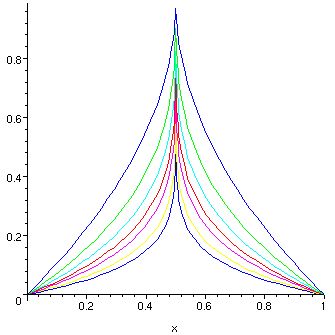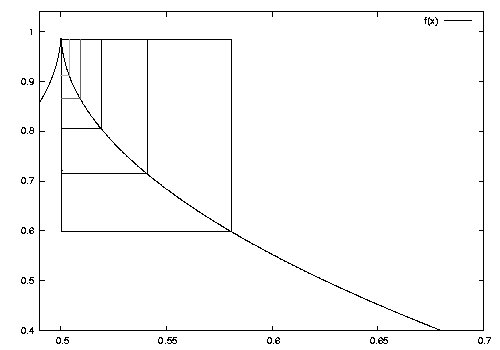Measuring pointiness of functions
Math in this page not rendering? See the fix
Naively, it seems unlikely that an approximation by smooth functions like polynomials or complex exponentials can reproduce points and jags in the original function. As it turns out, it can, if the points aren’t too pointy. How do we measure “pointiness?”
Consider the family of functions . The first few of these look like:

At , these functions are obviously not differentiable, that is
does not exist. The difference in the numerator doesn’t shrink fast enough to keep up with in the denominator. But what if we slow down the denominator? The easiest way is to raise to some power less than 1. So take
where . If we put in a sufficiently small , then the limit may exist.
The ’s are smnooth everywhere except at . Consider our new, slowed limit there.
which exists when . To see more clearly what this means, consider the box :

How much must we change to half the height of the box? If the function is differentiable, the answer (eventually, for a sufficiently small box) is to halve the horizontal dimensions of the box as well, since all differentiable can be well approximated as linear on sufficiently small regions. For our , we have to shrink faster and faster as increases.
More generally, a function is said to be -Hölder continuous if is the largest exponent in the denominator for which the limit above exists on the whole interval under consideration. The ’s provide a family of examples illustrating ’s throughout the admissable range. is discontinuous, and corresponds to , which is a Dirac function. We can’t make the limit exist. Differentiable functions have .
This mostly comes up when you’re looking at Fourier analysis, where the theorem I learned is that partial Fourier sums converge at least where . For rougher creatures, the series may behave itself or not.